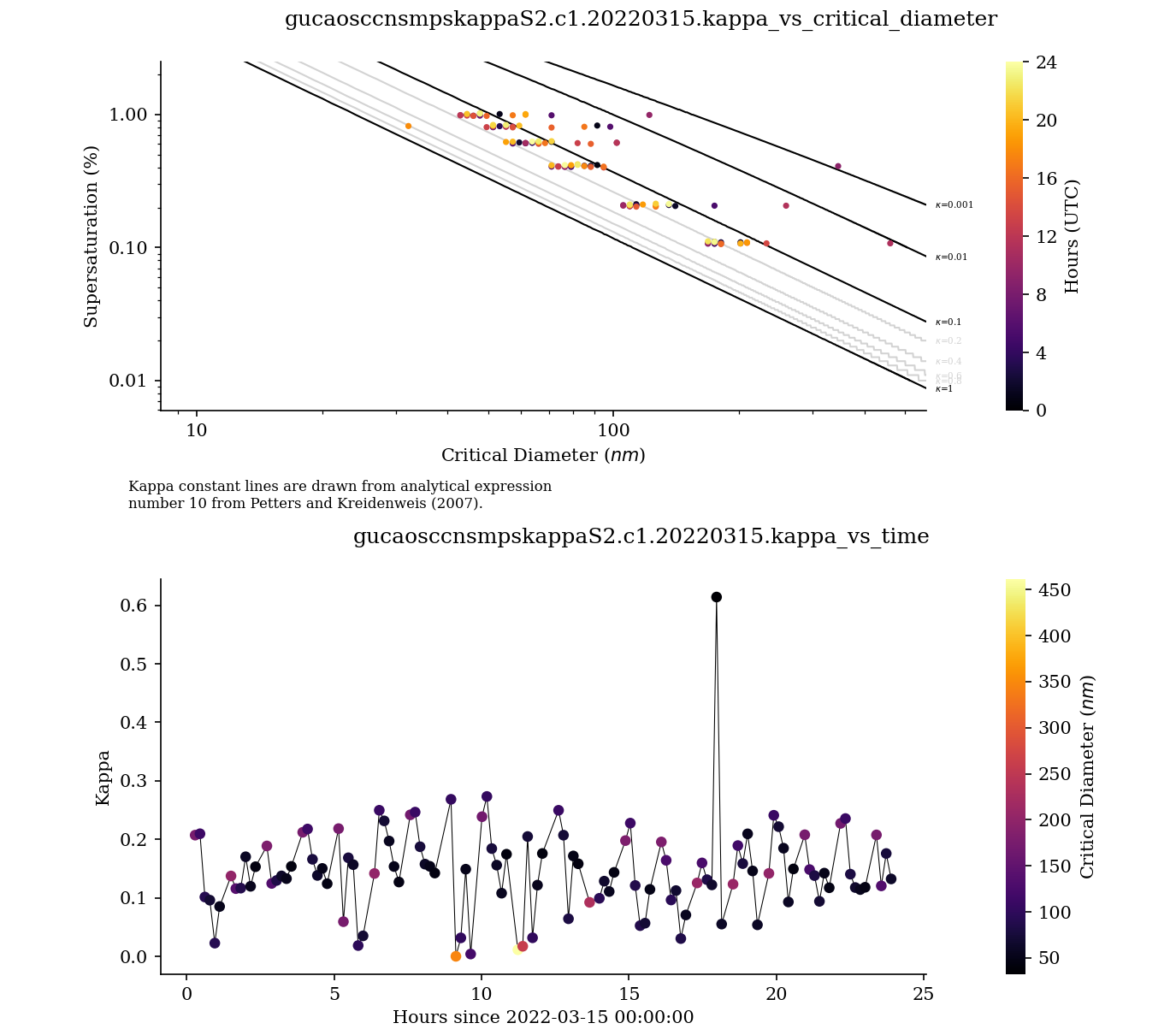New Aerosol Hygroscopicity Kappa Data Ready for Evaluation
Published: 26 July 2022

Hygroscopicity is the ability of a particle to take up moisture from the environment and is important for understanding the formation of cloud condensation nuclei (CCN). New data from a value-added product (VAP) that calculates the hygroscopic properties of measured aerosol particles are available for three field campaigns conducted by the Atmospheric Radiation Measurement (ARM) user facility.
Data from the CCN Counter and Scanning Mobility Particle Sizer (SMPS) Derived Hygroscopicity Parameter Kappa (CCNSMPSKAPPA) VAP are now available to evaluate for the following campaigns:
- the 2019–2020 Cold-Air Outbreaks in the Marine Boundary Layer Experiment (COMBLE) in northern Norway.
- the 2019–2020 Multidisciplinary Drifting Observatory for the Study of Arctic Climate (MOSAiC) expedition in the central Arctic.
- the ongoing Surface Atmosphere Integrated Field Laboratory (SAIL) campaign near Crested Butte, Colorado.
The hygroscopicity parameter, kappa, quantifies a particle’s capacity to activate into a water droplet. This kappa product provides a means to quantify hygroscopic properties of ambient aerosols and could be used to evaluate aerosol properties simulated in global earth system models.
The ARM CCN particle counter measures the fraction of ambient aerosols that can become liquid droplets at five supersaturations. These CCN data and co-located dry aerosol particle size measurements from the SMPS are used to calculate the critical diameter—the minimum particle diameter required to activate into a water droplet at each instrument supersaturation. For each critical diameter value, kappa is calculated using the kappa-Köhler theory (Petters and Kreidenweis 2007).
Scientists can use the aerosol hygroscopicity kappa VAP to help improve the understanding of aerosol-cloud interaction treatment in global earth system models.
Data are available as daily netCDF files.
For the COMBLE ARM Mobile Facility site near Andenes, Norway, files are available from December 1, 2019, to April 23, 2020.
MOSAiC data are available from October 11, 2019, to October 1, 2020.
SAIL data are available for the ARM Mobile Facility site in Gothic, Colorado, from September 1 to October 13, 2021, and for the supplementary site at Crested Butte Mountain Resort from November 27, 2021, to March 15, 2022.
Note: There will not be additional data from the SAIL Gothic site as the ARM Aerosol Observing System was moved to Crested Butte Mountain Resort.
The VAP team expects to release the next set of SAIL data in fall 2022.
Future work will involve expanding the availability of this product at more ARM sites where CCN particle counter and SMPS data are available.
To learn more about this product, go to the VAP web page.
If you have questions or feedback to help improve this data product, please contact science mentor Gourihar Kulkarni, ARM translator John Shilling, or VAP developer Maxwell Levin.
Access the data in the ARM Data Center. (Go here to create an account to download the data.)
Data can be referenced as doi:10.5439/1729907.
Reference: Petters MD and SM Kreidenweis. 2007. “A single parameter representation of hygroscopic growth and cloud condensation nucleus activity.” Atmospheric Chemistry and Physics, 7, 1961–1971, https://doi.org/10.5194/acp-7-1961-2007.
Keep up with the Atmospheric Observer
Updates on ARM news, events, and opportunities delivered to your inbox
ARM User Profile
ARM welcomes users from all institutions and nations. A free ARM user account is needed to access ARM data.


















